
Mathematical biology and life sciences
We apply mathematical modelling together with computational and statistical techniques to a wide range of problems in the life and social sciences.
Research leads

Professor Philip Aston
Drug-receptor interaction modelling

Dr Carina Dunlop
Drug delivery in tissues and tumours and mechanobiology
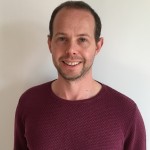
Professor David Lloyd
Zoonotic transmission of intestinal parasites

Professor Mark Roberts
Genetics of rapidly growing populations

Dr Naratip Santitissadeekorn
Environmentally driven disease
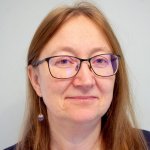
Professor Anne Skeldon
Sleep and circadian rhythms
Cellular systems and quantitative systems pharmacology
Cellular systems are highly complex, with feedback mechanisms typically operating over multiple time and length scales. This complexity means that mathematical approaches are ideal for investigating a range of cellular processes.
We explore both fundamental biological processes such as tissue development and cell signalling as well as more applications based research in pharmacokinetics and pharmacodynamics.
We work closely with experimental collaborators and industrial partners including Syngenta, AstraZeneca, GlaxoSmithKline and Pfizer and have representatives in the Quantitative Systems Pharmacology-UK (QSP-UK) network.
Drug-receptor interaction modelling
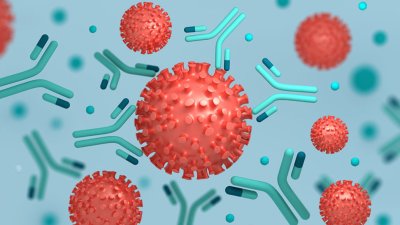
Drugs like antibodies aim to bind with receptors (antigens) to be effective. The receptors can have one or more binding positions. Central to the analysis in this research theme led by Philip Aston is the target mediated drug disposition model (TMDD), in which a receptor binds with only one antibody, and its extension to binding with one or two antibodies (dimerisation model). It is assumed that the binding is the fastest process. This gives a separation of time scales, which allows us to use geometric singular perturbation theory to analyse these models. In both models, the slow manifold consists of two components, which intersect transversely in the origin. The dimerisation model leads to a degenerate intersection.
To analyse such intersection, we consider a general two parameter slow-fast system in which the critical set consists of a one dimensional manifold and a two dimensional manifold, intersecting at the origin. Using geometric desingularisation, we determine the fate of the incoming one-dimensional manifold, which can be a jump away from the critical set or an exchange of stability between the attracting components of the critical set. The ultimate goal is to return to the dimerisation model and give the approximation of the full dynamics in the dimerisation model. This technique can be used to analyse similar models as well.
Drug delivery in tissues and tumours
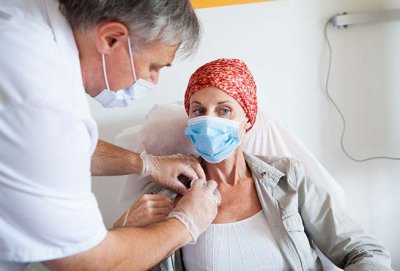
The spatial distribution of drugs within tissues is a major factor in determining their efficacy and the dynamics of treatment. Determining correct dosages and treatment protocols all depend crucially on understanding how the drug will reach the tissue and at what concentration. Equally, it is becoming increasingly clear that biological tissues are highly heterogenous with multiple cell types and vessels affecting diffusive processes.
This research strand led by Carina Dunlop focuses on developing spatial descriptions of drug distribution in both healthy and disregulated tissues. This is a cross-cutting theme interfacing with pharmacokinetic-pharmacodynamic (PKPD) research and tissue modelling research throughout our group.
Mechanobiology
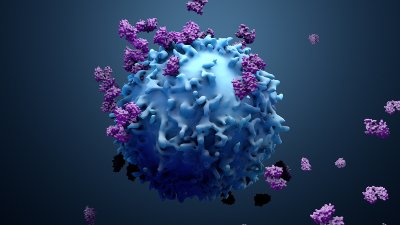
This area of research led by Carina Dunlop focuses on the cell as a physical object, incorporating an understanding of the role of mechanical forces into models of biological processes.
It draws on a diverse range of concepts in pursuing this research ranging from population modelling to the theories of fluid dynamics and elasticity theory. In particular, mechanotransduction and tissue self-organisation and morphogenesis.
Mechanotransduction
Cells are observed to respond directly to changes in the mechanical properties of their environments with e.g. type specification, growth and death all being found to be sensitive to changes in substrate stiffness. Importantly this mechanotransduction must be carefully coordinated within tissues to account not just for cell-substrate but also cell-cell interactions.
Tissue self-organisation and morphogenesis
Tissues grow and shape themselves through the physical actions of individual cells, which include moving, adhering, and contracting. Crucially these behaviours must be carefully controlled through cell-cell and cell-matrix signalling to ensure the regulation of tissue size and shape. To model this process of tissue growth and shape control a range of approaches is used including agent-based simulations and continuum modelling.
Epidemiology, ecology and population genetics
In recent years, our mathematicians have worked on some particularly novel projects in ecology, epidemiology and population genetics. Some of these projects highlight the importance of the overlaps of the three areas.
Environmentally driven disease
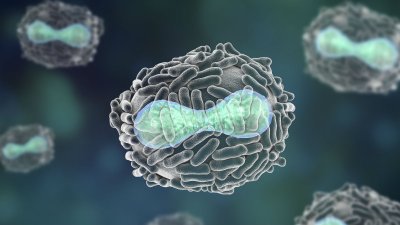
This project led by David Lloyd and Naratip Santitissadeekorn focuses on understanding the link between environmental and environmentally driven diseases such as Campylobacter and Salmonella. These types of diseases have little human to human transmission and there is less understanding about how to model them.
This study aims to use a combination of mathematical data science methods, mechanistic modelling, and Bayesian statistics to develop a better understanding of the disease burden and inform public health planning.
The project is a collaboration with Gianni Lo Iacono (School of Veterinary Medicine, Surrey), Professor Gordon Nichols (Public Health England), and Dr Christophe Sarran (Met Office).
Zoonotic transmission of intestinal parasites

Intestinal helminths are highly prevalent infections in humans, particularly in rural and poor urban areas of low and middle income countries. Infections are widespread and contribute significantly to the global burden of disease.
This project focuses on developing mathematical models for the transmission of intestinal parasites and public health implications. Led by academics at the School of Veterinary Science at the University of Surrey, University of the Philippines, Los Baños (UPLB) and University of the Philippines, Manila (UPM) the project team will carry out field work in Mindanao, the Philippines.
In terms of mathematics, David Lloyd will lead on developing susceptible-infected-recovered type models to help understand the transmission and public health planning.
Genetics of rapidly growing populations
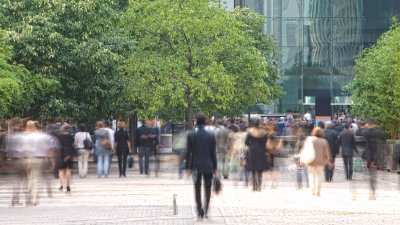
Mathematical models for the change of allele frequencies over time have played a central role in the development of population genetics over the last century and continue to be of critical importance in the genomic era. However, analysis of these models has rarely ventured beyond the case of populations of constant size, despite the obvious relevance of exponential growth to human genetics.
This project, led by Mark Roberts, is revealing that properties of allele frequencies predicted by constant population models, and which are often regarded as fundamental by geneticists, do not hold for populations that are growing exponentially. Potential areas of applications include genetic diversity, genetic epidemiology, genetic archaeology, and evolution. Current collaborators include Patricia Lund (Coventry University) and Peter Nabutanyi (Dar Es Salaam, Bielefeld).
Sleep and circadian rhythms
Our lives have an approximately daily (circadian) rhythm of wake and sleep, feeding and fasting. These rhythms are part of a complex, hierarchical, coupled oscillator system with rhythmicity generated within nearly every cell of our bodies and coordinated by the so-called 'master' clock in the suprachiasmatic nucleus of the brain. There is increasing evidence that disrupting our biological rhythms is bad for our health and a contributory factor to obesity, cardiovascular disease, mood disorders and cognitive decline.
We use mathematical models at many different scales to help understand the structure of this complex system – from detailed models of gene transcription/translation cycles at the molecular level through to human scale models of the sleep/wake cycle.
The impact of the modern light environment on sleep
Anne Skeldon with Derk-Jan Dijk (Surrey Sleep Research Centre) are using mathematical modelling to assess the impact of the modern light environment on sleep and the consequent impact on health and wellbeing. Traditionally, humans experienced bright light during the day and very low levels of light after sunset. The use of bright artificial lighting has had a profound effect on our light environment, giving us much greater choice over when we work and socialise. But with what impact? Light pollution at night disrupts the behaviour of wildlife and is correlated with poor sleep quality and reduced sleep duration in humans.
During waking hours, our lifestyles mean that we spend the majority of time indoors and expose ourselves to artificial light long after sunset. The net effect is that we have a greatly reduced exposure to the natural cycle of light and dark, resulting in delayed circadian rhythms, later sleep timing, social jet-lag and difficulties maintaining 24-hour rhythmicity. These issues are further exacerbated by the increased use of lighting in the evening with an enhanced-blue component.
In a recent paper with Andrew Phillips (Harvard Medical School), mathematical modelling is used to understand how light, individual physiological differences and social constraints such as getting up for work or school interact. The work was featured in the UK parliamentary debate 'school should start at 10am because teenagers are too tired'. The team has a particular interest in the impact of our light environment on sleep, including the impact of permanent DST.
Analysis of mathematical models of sleep/wake regulation: Non-smooth dynamics and bifurcations

The most influential model of sleep/wake regulation is the two process model. This model postulates that sleep and wake occur as a result of the interaction of two oscillators, one describing circadian rhythmicity (the body clock) and one describing sleep homeostasis (sleep need). This model has formed the theoretical framework for sleep researchers for the last 30 years, and forms the backbone of recent `physiological' models of sleep. The two process model is an interesting example of a non-smooth dynamical system.
Anne Skeldon, with PhD student Matt Bailey, are investigating the bifurcations and dynamics of the two process model, which can be represented as a circle map. In collaboration with Paul Glendinning (University of Manchester), they have also analysed a broader class of `threshold models' of which the two process model is an example.
Interactive models

We are interested in developing interactive tools to help explain the interactions of sleep, light and social rhythms. Take a look at an early example of this work from Anne Skeldon.
Sleep, maths and technology
Anne Skeldon and Derk-Jan Dijk are interested in developing new data analytics/mathematical modelling techniques for extracting meaning from data, particularly in the context of sleep and circadian rhythms. Some of their work is funded by the Dementia Research Institute, which aims to develop technological solutions to help people live in their own homes as long as possible. They also collaborate with researchers in the Centre for Vision Speech and Signal Processing.
Biomathematical models of fatigue
When people are sleep deprived, they make poorer decisions, are slower to react and are more at risk of having accidents. In the workplace, employers have a duty to manage fatigue risk – a particular issue for shift work. Anne Skeldon, Derk-Jan Dijk, and Steven Lockley (Surrey Sleep Research Centre) develop and apply biomathematical models of fatigue. Read a report on fatigue, alertness and risk prediction for shift workers from a recent collaboration with TFL.



